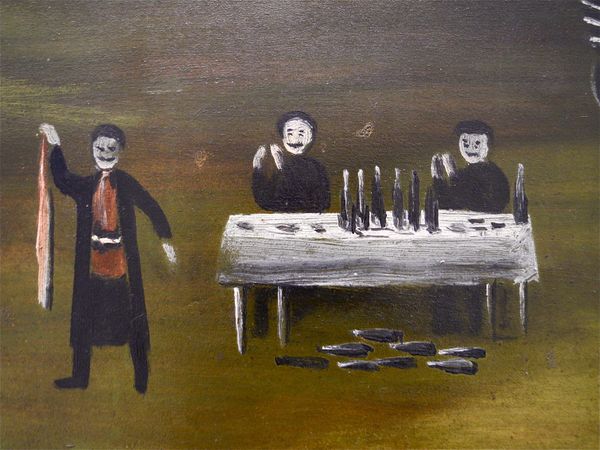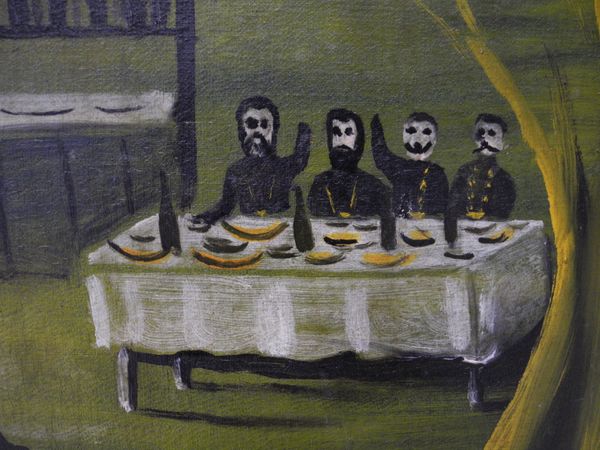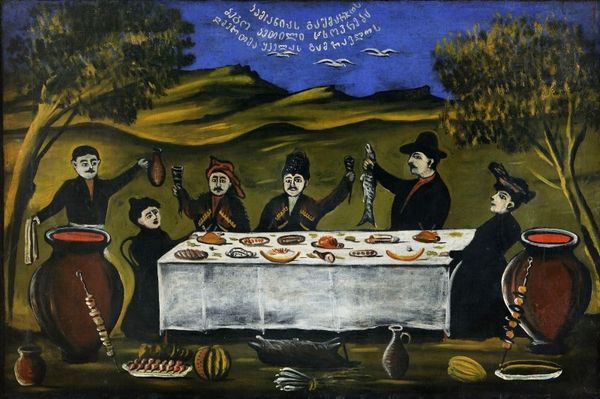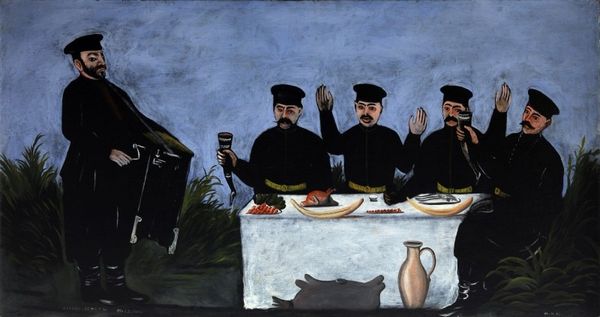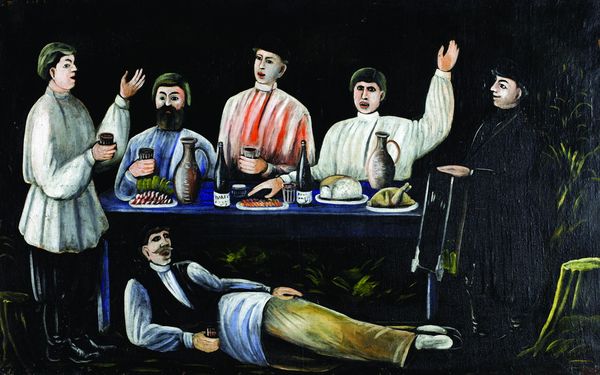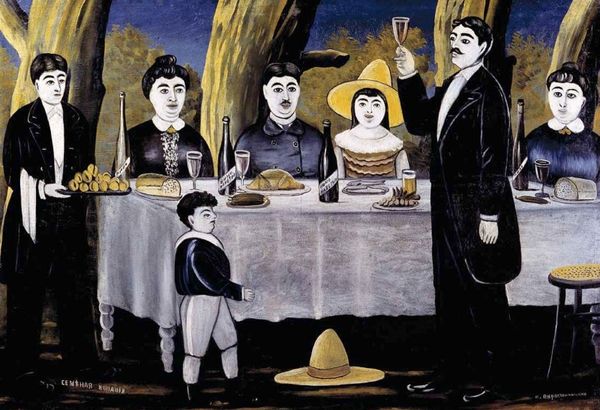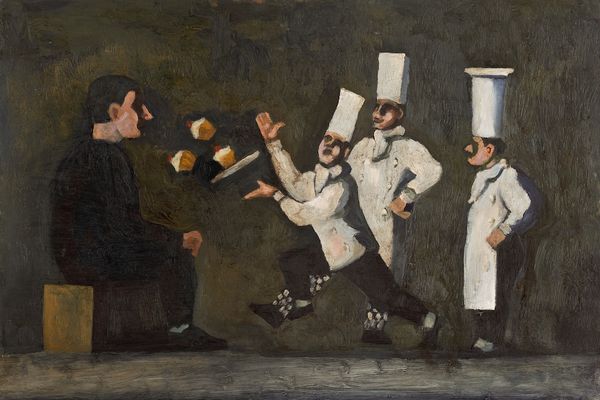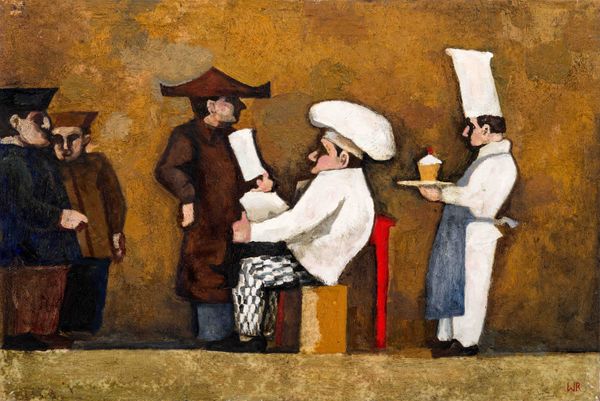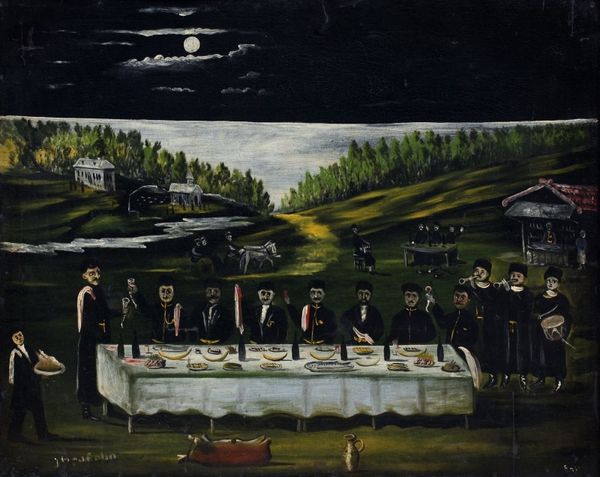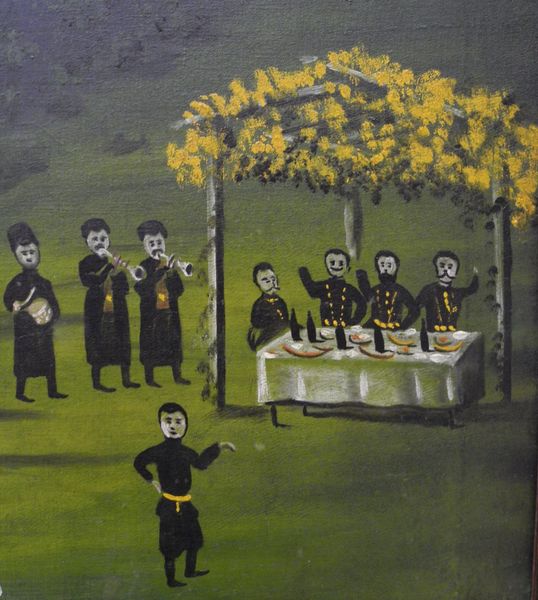
painting, oil-paint
#
portrait
#
painting
#
oil-paint
#
oil painting
#
genre-painting
#
portrait art
Copyright: Public domain
Curator: Here we have Niko Pirosmani's, "Saint George’s Day in Bolnisi,” painted around 1915. Pirosmani, a self-taught Georgian artist, often depicted scenes of daily life and celebrations. What’s your immediate reaction to this piece? Editor: There's something quite arresting about its simplicity, wouldn't you agree? The stark, almost childlike rendering of the figures is oddly charming. I am also struck by how the bareness of the surface around figures sharpens the viewer's attention. Curator: Precisely. It speaks to Pirosmani's background, painting on oilcloth often used for shop signs. He wasn't trained in the academy; his work arose directly from the urban culture of Tbilisi and his social context. Saint George's Day was a significant holiday, blending religious devotion with communal feasting. The painting seems to capture that raw, unvarnished spirit. Editor: Consider also how Pirosmani's choices heighten the scene. The almost brutally reductive application of color, particularly the blacks and the stark white tablecloth. This draws a visual weight and invites a reading of each mark. Even in the faces. Curator: Indeed. Pirosmani's style defied academic norms, allowing him to represent Georgian society authentically. The figures in their traditional dress, raising their glasses, echo a society deeply connected to its roots. These kinds of paintings were commissioned directly by the taverns, and the way he portrayed these festive scenes offered not just celebration, but an aspiration for abundance in pre-revolutionary Georgia. Editor: Do you feel the composition adds weight, however? In that foreground, the fallen bottles certainly provide a sense of completion or even closure. They emphasize the passage of time within the celebration—a narrative quietly alluded to. The work speaks of a world where the lines of class, gender and time dissolve into revelry. Curator: I agree; viewing it today offers us a peek into a vibrant society that underwent immense transformation after the Soviet takeover. It is essential, because of his non-conventional approach, that he depicts the realities of pre-Soviet Georgia with such bold, untutored strokes. He challenges traditional understanding and offers a glimpse into social interactions, that help us form an understanding of the time and space where the scene took place. Editor: I find the painting successful both visually and as an illustration of human feeling, don’t you agree? Curator: Yes, the work, though modest in scale, holds such tremendous social significance. Editor: A brief yet rewarding look!
Comments
No comments
Be the first to comment and join the conversation on the ultimate creative platform.
